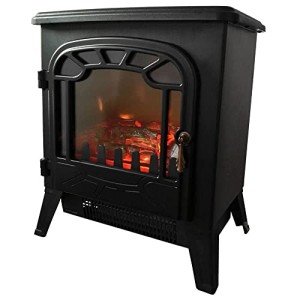The Charm and Functionality of Fireplaces: A Comprehensive Guide
Fireplaces have long been a central function in homes, signifying heat, friendship, and comfort. They come in different styles, products, and fuel types, catering to the choices and needs of varied house owners. This post looks into the complex world of fireplaces, exploring their history, types, installation factors to consider, and maintenance pointers, while providing FAQs to resolve typical questions.
A Brief History of Fireplaces
Historically, fireplaces worked as the foundation for cooking and heating homes. In ancient times, an open hearth was typically put in the center of a house. Over centuries, architectural advancements assisted in the development of more sophisticated designs, evolving from simple stone structures to elaborate mantels that preside over modern living areas.
Key Historical Milestones:
- Ancient Times: Open fires in caverns and primitive huts for heat and cooking.
- Middle Ages: Large, commonly centralized chimney structures in excellent halls of castles.
- Renaissance: Decorative mantels and designs gain popularity, with the fireplace becoming a symbol of wealth and status.
- Industrial Revolution: Advancements in products and making enable a broader variety of fireplace styles.
- Modern Era: Gas and electric fireplaces become commonplace, permitting increased convenience and security.
Kinds of Fireplaces
Today, many types of fireplaces are available, each with its unique attributes. Below is a breakdown of the most common types:
| Fireplace Type | Description | Pros | Cons |
|---|---|---|---|
| Wood-Burning | Traditional fireplaces fueled by wood. | Authentic experience, heat output. | Labor-intensive, needs appropriate venting/maintenance. |
| Gas | Fireplaces that utilize gas or propane. | Easy to utilize and keep. | Less ambiance compared to wood. |
| Electric | Uses electrical energy to create heat and flames. | Safe, no venting needed. | Minimal heat output, higher energy expenses. |
| Bioethanol | Uses bioethanol fuel, producing clean flames. | Eco-friendly, portable. | Requires routine refueling. |
| Pellet | Uses compressed wood pellets as fuel. | Clean burning, sustainable. | Requires power for operation. |
Extra Considerations
When choosing a fireplace, it is necessary to think about factors such as:
- Fuel Availability: Consider what fuels are readily available in your area.
- Area and Aesthetics: The size of your living location and your style preferences must assist your choice.
- Structure Regulations: Always speak with local policies to make sure compliance and safety.
Installation Considerations
Setting up a fireplace includes more than merely positioning a structure in your house. Comprehensive preparation, professional input, and adherence to safety codes are vital. Here are some important steps:
- Planning: Consider the size and type of fireplace, where it will be put, and its intended use.
- Consultation: Hire a licensed specialist to examine your home and make sure proper setup.
- Permits: Obtain any necessary building authorizations from regional authorities.
- Materials: Select suitable products for the fireplace and surrounding area. Guarantee they are fireproof and designed for your fuel type.
Maintenance Tips for Fireplaces
Regular maintenance ensures your fireplace runs securely and effectively. Here are vital maintenance tips classified by fireplace type:
Wood-Burning Fireplaces
- Chimney Cleaning: Have your chimney cleaned up annually to avoid creosote buildup.
- Examine for Damage: Check for cracks and damage to the firebox and chimney structure.
- Firewood Storage: Store fire wood away from your house to prevent bug problems.
Gas Fireplaces
- Log Inspection: Regularly take a look at ceramic logs for cracks and replace if necessary.
- Vent Cleaning: Ensure that vents are totally free from obstructions.
- Pilot Burner Check: Test pilot lights and ignition systems regularly.
Electric Fireplaces
- Cable Inspection: Frequently examine electrical cables for tearing or use.
- Clean Surfaces: Wipe down surface areas routinely to eliminate dust and particles.
- Smoke Detectors: Ensure smoke detectors in the area are functional.
Bioethanol and Pellet Fireplaces
- Fuel Storage: Store fuels in a cool, dry place away from direct sunlight.
- Routine Refueling: Monitor fuel levels and refuel as required.
- Ventilation: Ensure proper ventilation when using these fireplaces.
Frequently asked questions About Fireplaces
Q1: Do I need a permit to install a fireplace?
Yes, the majority of towns need licenses for fireplace setups to make sure security and compliance with regional building regulations.
Q2: How typically should I clean my chimney?
It is recommended to have your chimney cleaned up a minimum of when a year, especially if you utilize your fireplace often.
Q3: Can I convert a wood-burning fireplace to gas?
Yes, lots of homeowners convert wood-burning fireplaces to gas for convenience, but consulting a professional is advisable to ensure a correct conversion.
Q4: Do electric fireplaces produce heat?
Yes, electric fireplaces can produce heat; nevertheless, their main function is typically for ambiance, making them an appropriate option for those who desire a fire look without comprehensive heating.
Q5: Are bioethanol fireplaces safe?
Bioethanol fireplaces are usually safe when used correctly; nevertheless, they need appropriate ventilation, and users ought to follow all maker standards.
Fireplaces not only add visual appeal to homes however likewise provide practical heating options. With Best Fireplace Online , styles, and upkeep requirements, house owners can make educated choices that best fit their needs and way of lives. Whether going with the appeal of a wood-burning fireplace or the benefit of a gas model, a fireplace can significantly enhance a living space's comfort and atmosphere. As the hearth remains a focal point in homes, it continues to foster warmth, discussion, and connections among friends and family.

